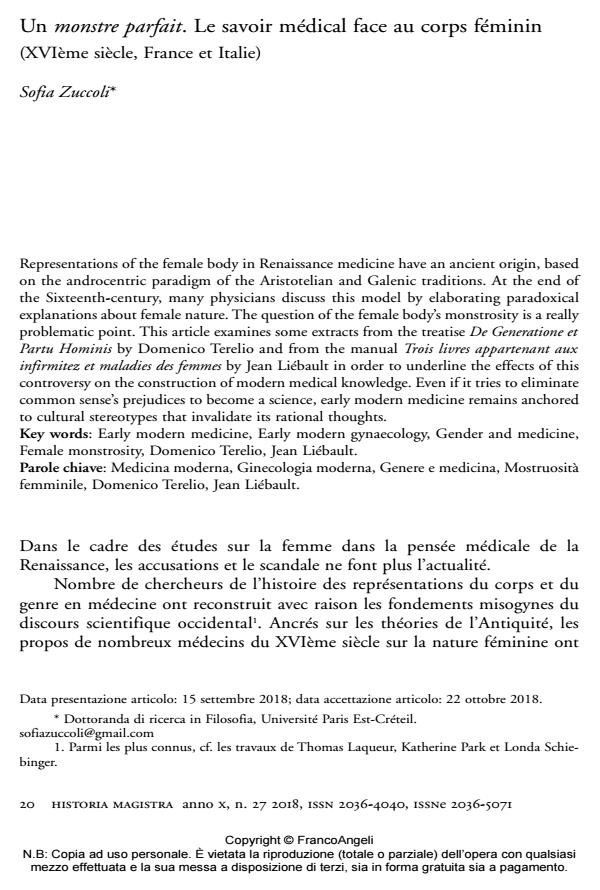Un monstre parfait. Le savoir médical face au corps féminin (XVIème siècle, France et Italie)
Journal title HISTORIA MAGISTRA
Author/s Sofia Zuccoli
Publishing Year 2018 Issue 2018/27
Language Italian Pages 16 P. 20-35 File size 108 KB
DOI 10.3280/HM2018-027003
DOI is like a bar code for intellectual property: to have more infomation
click here
Below, you can see the article first page
If you want to buy this article in PDF format, you can do it, following the instructions to buy download credits

FrancoAngeli is member of Publishers International Linking Association, Inc (PILA), a not-for-profit association which run the CrossRef service enabling links to and from online scholarly content.
Representations of the female body in Renaissance medicine have an ancient origin, based on the androcentric paradigm of the Aristotelian and Galenic traditions. At the end of the Sixteenth-century, many physicians discuss this model by elaborating paradoxical explanations about female nature. The question of the female body’s monstrosity is a really problematic point. This article examines some extracts from the treatise De Generatione et Partu Hominis by Domenico Terelio and from the manual Trois livres appartenant aux infirmitez et maladies des femmes by Jean Liébault in order to underline the effects of this controversy on the construction of modern medical knowledge. Even if it tries to eliminate common sense’s prejudices to become a science, early modern medicine remains anchored to cultural stereotypes that invalidate its rational thoughts.
Keywords: Early modern medicine, Early modern gynaecology, Gender and medicine, Female monstrosity, Domenico Terelio, Jean Liébault.
- « In mulieribus […] memoria felicior ». Mémoire et différence des sexes selon les médecins modernes (xvie et xviie siècles) Sofia Zuccoli, in Cahiers François Viète /2024 pp.15
DOI: 10.4000/12ju9
Sofia Zuccoli, Un monstre parfait. Le savoir médical face au corps féminin (XVIème siècle, France et Italie) in "HISTORIA MAGISTRA" 27/2018, pp 20-35, DOI: 10.3280/HM2018-027003